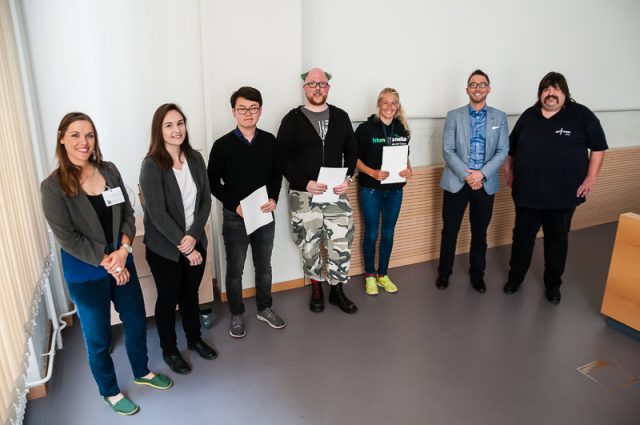Greta Aßmann is another poster prize winner of the recent meeting of the Young Crystallographers in Berlin. She started her bachelor studies in Biological Sciences at the University of Konstanz. She did her Bachelor Thesis in the genetics department. Greta completed the Master program of Biological Sciences with major focus on plant physiology, pharmacology and bioinformatics, where she also got in touch with programming and informatics for the first time. She worked on her Master thesis in the group of Prof. Dr. Kay Diederichs (X-Ray crystallography and Bioinformatics), where she also started her PhD in 2015. Between the Master and PhD program, Greta did two internships, one in Norway at the University of Bergen and additionally at the pharmaceutical company Max Zeller & Söhne AG in Switzerland.
What is your personal attraction with statistical methods?
I think analyzing a problem with statistical methods is a very convenient way to do, because you can directly derive assumptions and properties from a statistical model, predicting or verifying your experimental data. Especially with very big data sets, such as data from Cryo-EM or X-ray Crystallography it is indispensable to assess the quality of measurements with statistics, as errors from vast amounts of measurements can easily mislead if not detected. For me it is therefore very attractive to do research with statistical methods, especially in order to automate and simplify data evaluation processes.
What was the largest obstacle you had encountered in your research project and how did you overcome it?
I think I encountered just the ’normal‘ obstacles everyone has to deal with- nothing extraordinary. Once I had some difficulties in a validation process for one of our algorithms dealing with data quality improvement. After some weeks we finally found the problem by basically trying and thinking.
What was a major breakthrough in your project and how was it triggered?
A major breakthrough was when we had overcome the problem described in the question above. I was finally able to show that our previously assumed theory was correct and that we could indeed predict if specific data sets (displaying systematic errors) are not fitting to the other collected data sets. I guess it was not particularly triggered by any event, just by some new ideas which worked out.
What was most your favourite part of the meeting?
I really enjoyed the industry talks a lot. For me, it was very interesting to get some good advises how to apply at a company and how a ‚usual‘ day in such a company looks like. Moreover I particularly enjoyed the talk of Francesca Fabbiani, where she showed us her steps of her scientific career in academia especially for woman – besides her research projects. As I am a great fan of dinosaurs I loved the guided tour at the Natural History Museum.
Left to right: Yulia Ilina (Berlin, Organizer), Lilith Domnik (Berlin, Organizer), Wei Meng (Cambridge, UK, Poster Prize Winner), Dennis Wiedemann (Berlin, Poster Prize Winner), Greta Assmann (Konstanz, Poster Prize Winner), Oliver Pecher (Cambridge, UK, Organizer), Thomas Hartmann (Darmstadt, STOE)
